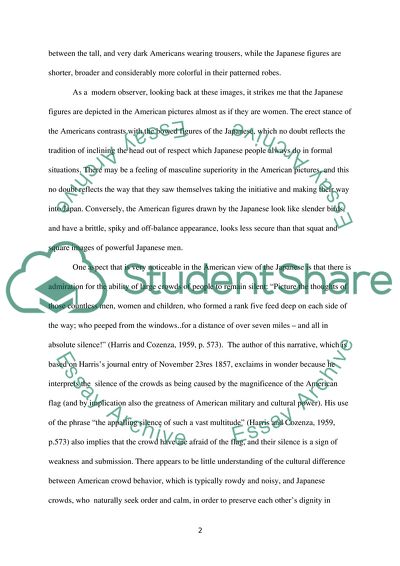Cite this document
(Ways in Which Japanese and Americans Viewed Each Other Essay, n.d.)
Ways in Which Japanese and Americans Viewed Each Other Essay. https://studentshare.org/culture/1787711-discuss-your-impressions-of-the-ways-in-which-japanese-and-americans-viewed-each-other-what-things-did-they-seem-to-notice-about-each-other-and-what-things-were-they-interested-in-understanding-about-each-other
Ways in Which Japanese and Americans Viewed Each Other Essay. https://studentshare.org/culture/1787711-discuss-your-impressions-of-the-ways-in-which-japanese-and-americans-viewed-each-other-what-things-did-they-seem-to-notice-about-each-other-and-what-things-were-they-interested-in-understanding-about-each-other
(Ways in Which Japanese and Americans Viewed Each Other Essay)
Ways in Which Japanese and Americans Viewed Each Other Essay. https://studentshare.org/culture/1787711-discuss-your-impressions-of-the-ways-in-which-japanese-and-americans-viewed-each-other-what-things-did-they-seem-to-notice-about-each-other-and-what-things-were-they-interested-in-understanding-about-each-other.
Ways in Which Japanese and Americans Viewed Each Other Essay. https://studentshare.org/culture/1787711-discuss-your-impressions-of-the-ways-in-which-japanese-and-americans-viewed-each-other-what-things-did-they-seem-to-notice-about-each-other-and-what-things-were-they-interested-in-understanding-about-each-other.
“Ways in Which Japanese and Americans Viewed Each Other Essay”. https://studentshare.org/culture/1787711-discuss-your-impressions-of-the-ways-in-which-japanese-and-americans-viewed-each-other-what-things-did-they-seem-to-notice-about-each-other-and-what-things-were-they-interested-in-understanding-about-each-other.


